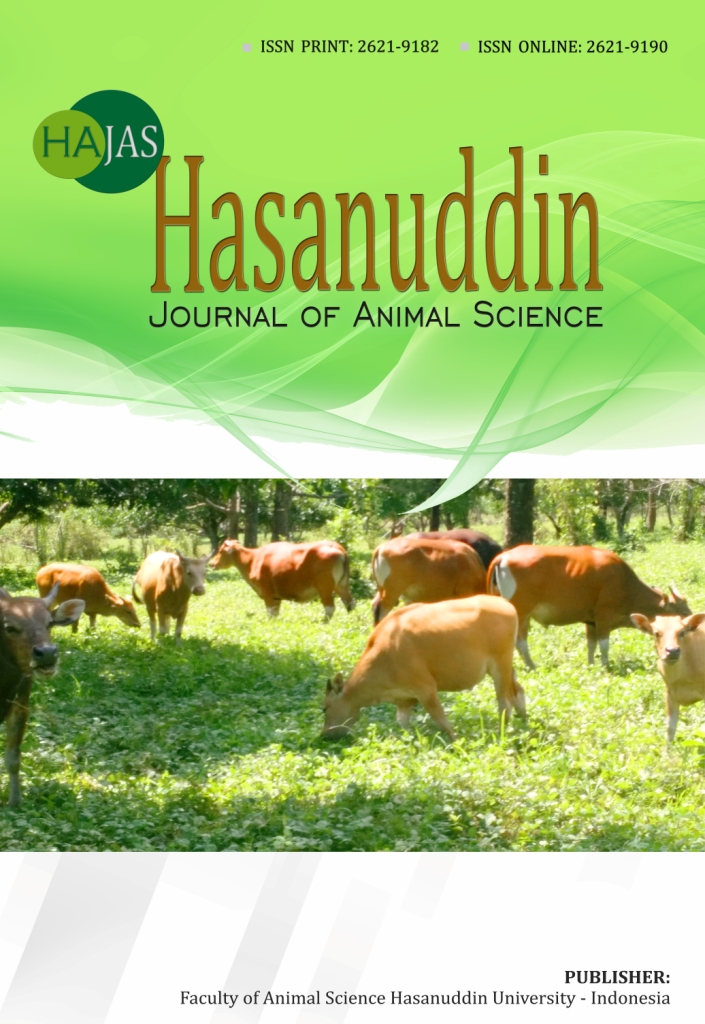Evaluation of Pathogenic Contamination of the Liver and Meat from Traditional Markets in Makassar
Abstract
Many factors influence the growth of microorganisms on and in meat, including temperature, moisture content, oxygen, pH, and meat nutrition. Meat is a medium that is very suitable for the growth of microorganisms because it has a highwater content of 68-75%, high nutrition, complete mineral content and a pH 5.3-6.5. Contamination of microorganisms on the surface of meat or carcass has started since the slaughter of livestock until the meat is consumed. The purpose of this study was to evaluate the presence of microorganism contamination in meat sold in traditional markets in Makassar. Beef and beef liver were taken from traditional markets in Makassar and then tested for Total Bacteria, Salmonella sp. as an indicator of pathogenic bacteria contamination in meat. The total bacterial contamination of beef and beef liver was still higher than the provisions of the Indonesian National Standard and the bacteria that could be suspected were Salmonella sp.
Downloads
Published
Issue
Section
License

This work is licensed under a Creative Commons Attribution-NonCommercial 4.0 International License.











